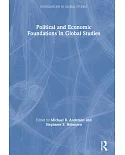This publication is an output of joint research conducted under "Ecosystems for Life: A Bangladesh-India Initiative" on the importance of migratory and spawning patterns for the conservation
of the Hilsa, which falls under the Ecosystems for Life theme of improving understanding of ecosystems and habitats. Hilsa is the national fish of Bangladesh and is also important culturally
in West-Bengal, India. It is an important staple food and source of income for millions of people in the region. The focus of this research was prompted by recent serious declines in the
Hilsa catch. The objective of the research was to study migration and spawning patterns, methods of fishing, status of, and threats to, Hilsa in the region with a view to enhanced
conservation. It also reviewed and assessed how current legislation and policy is affecting the species. The research revealed a number of key issues including over exploitation, siltation in
river beds, a decrease in water flow from upstream, fragmentation of the river in the dry season and a need to regularise conservation and protection mechanisms between Bangladesh and India.
After a series of multi-stakeholder consultations on the research findings a set of policy options and recommendations have been identified for policy makers in both countries. This joint
research study highlights the urgency of adopting new measures to protect this important shared resource and the river systems, the Hilsa, depend on for their survival. It also clearly
identifies the importance of working together across national boundaries to fully identify the complex issues affecting the health of a species like the Hilsa, and to adopt and enforce shared
management regimes. The work is co-published with the IUCN (International Union for Conservation of Nature)





















